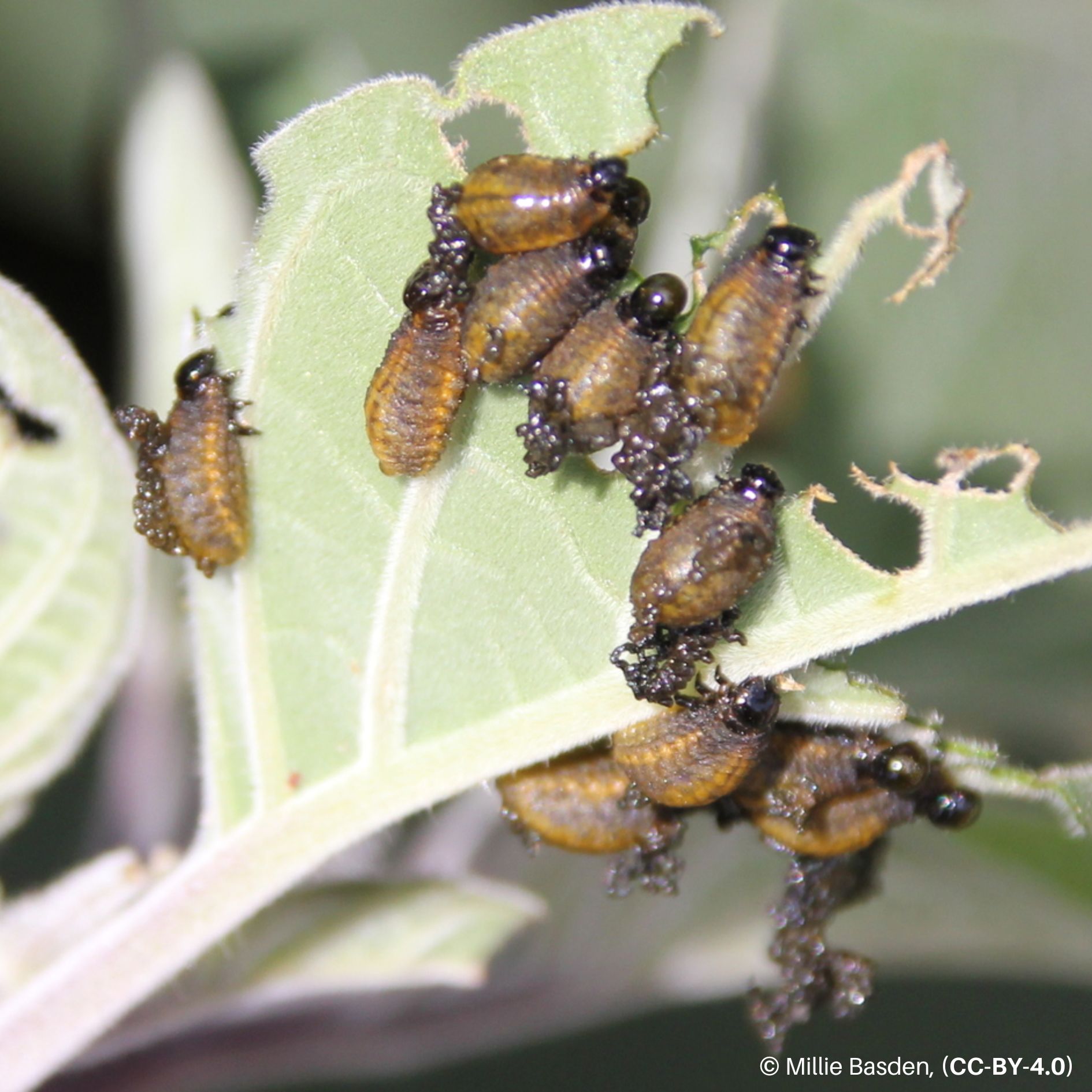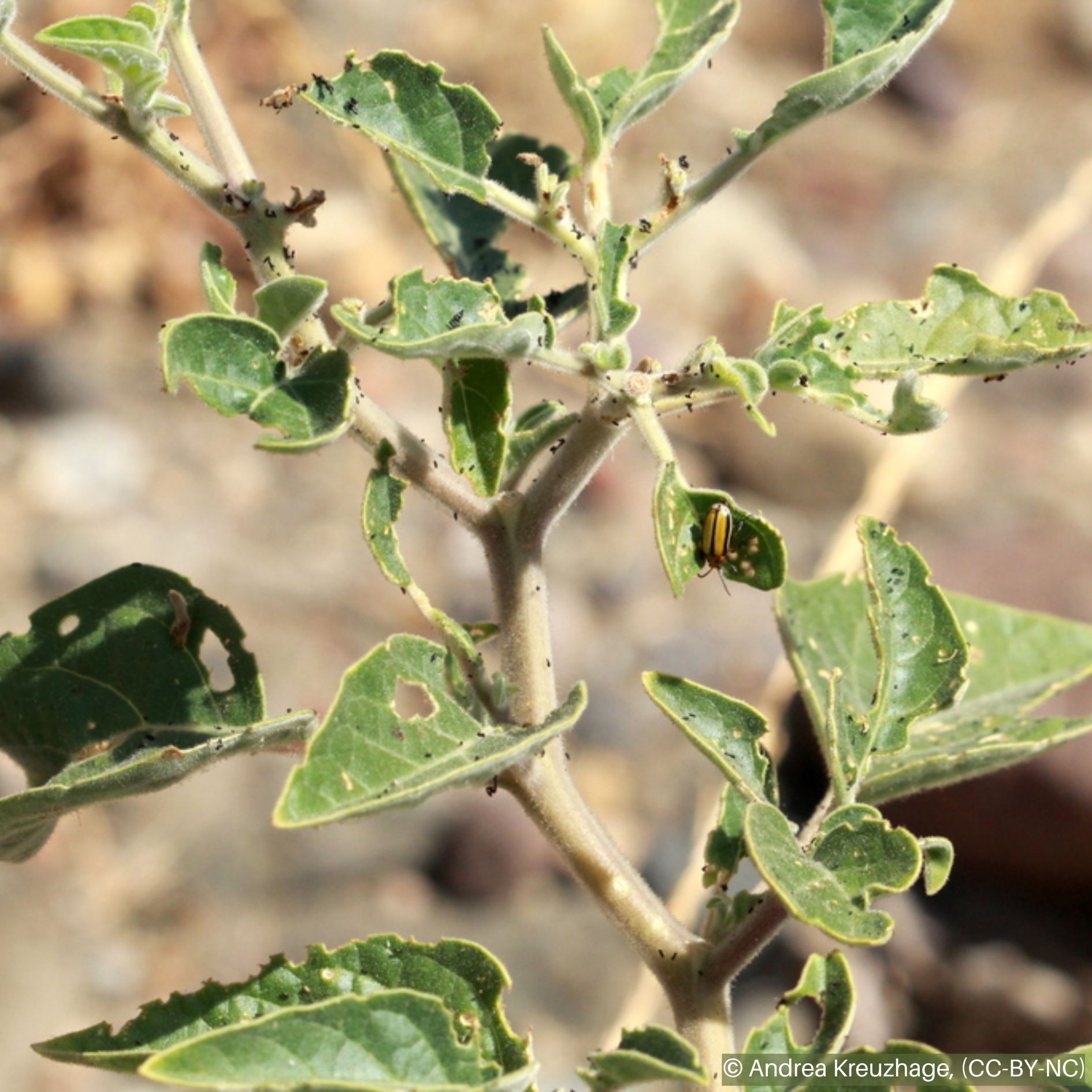Three-Lined Potato Beetle
 Three-Lined Potato Beetle Life Stages
Three-Lined Potato Beetle Life Stages Larvae and Feeding Damage
Larvae and Feeding Damage Three-Lined Potato Beetle on Tomatillo Plant
Three-Lined Potato Beetle on Tomatillo Plant Three-Lined Potato Beetles on Plant with Feeding Damage and Frass
Three-Lined Potato Beetles on Plant with Feeding Damage and FrassHOSTS
- Solanaceae
- Potatoes
OVERVIEW
The three-lined potato beetle (Lema daturaphila) is a pest to many plants in the nightshade family, most notably tomatillos. Both adults and larvae can cause feeding damage to plant foliage.DESCRIPTION
Adults have orange bodies, black antennae, and two small black spots behind their heads. Their elytra (wing covers) are yellow with three black stripes that run lengthwise down their back. Larvae are yellow-green with black heads, and three pairs of legs. Larvae will often cover themselves with their excrement as a defense against predators.
BIOLOGY
Egg | Larva | Pupa | Adult
Three-lined potato beetles may overwinter in the adult stage or pupae stage in the soil. They can emerge from May to August to mate and lay their eggs on host plants. The eggs are laid in groups on the underside of leaves. After hatching, larvae will congregate together and feed on foliage. Larvae will pupate in mid to late summer, reaching the adult stage. In Utah, there is normally one generation per year.
SYMPTOMS
Adults and larvae feed on host plants, leaving holes in the foliage. Heavy feeding can cause complete defoliation.
GENERAL MANAGEMENT
- Hand-removing the larvae and placing them in soapy water can be effective for small-scale producers.
- Remove nearby weeds, especially those in the nightshade family, as they can act as alternative hosts for the beetles.
- Row covers can be effective in excluding three-lined potato beetle adults when they emerge in the spring.
INSECTICIDES
Coming Soon

